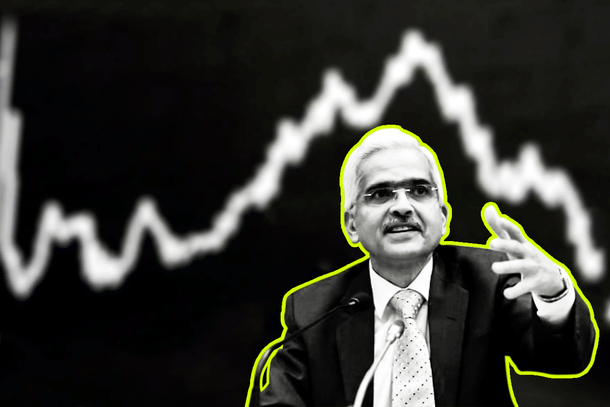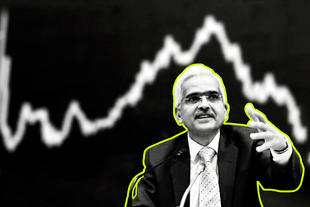Economy
Dear RBI: Cut The Rates, Cut The Rates, Cut The Rates!
Karan Bhasin
Sep 19, 2019, 02:23 PM | Updated 02:23 PM IST
Save & read from anywhere!
Bookmark stories for easy access on any device or the Swarajya app.


Regular readers know my belief that our monetary bosses have got it wrong and the fact that RBI’s governor had to make a statement that he was surprised by the 5 per cent growth further reinforces my argument that all is not well with India’s central bank!
Not once, but many times I had published my forecast for GDP for the first quarter of the current financial year as 5.0-5.4 per cent. This forecast was based on using publicly available data and yet, the lower-bound had it at 5.0 per cent.
The RBI and its research desk have greater access to data and if, even after that they’re unable to see the extent of damage their monetary policy has inflicted upon the economy, then we must be concerned.
A question worth asking is if the governor has just accepted the incompetence of the MPC (Monetary Policy Committee of India) in terms of accessing the extent of output gap and if he has, then is he willing to rectify the same by pushing for aggressive cuts going forward?
It looks highly unlikely, as the RBI — as an institution — has started to look at the Current Account Deficit (CAD) and oil prices, which has sent a signal that further rate cuts may take these factors into account.
This is absurd for many reasons because we’ve seen the RBI — which has got a mandate — shift the goalpost far too many times in the past. Moreover, the MPC is an institution that under the Urjit-Viral tenure failed to even comply with their self-stated neutral real repo rate of 1.25.
For a major part of the tenure of MPC, we’ve been above this rate except for a brief couple of months. This suggests that the RBI believes that the economy overheated in 2017 and 2018 while the exact opposite happened thanks to their policy choices.
The fact that oil prices have got largely moderated takes away the excuse on that front to go slow with rate cuts. Further, when there’s a simultaneous rate cut by all major central bankers of the world, cutting rates is unlikely to lead to a capital flight, as feared by many.
The statement by the governor that he was surprised at the Q1 numbers is also an explanation for why their rate cuts were slow. But it’s not he who is at fault because the monetary problem has persisted for a long time.
However, it does dent the credibility of India’s central bank. And the fact that it failed to get its inflation forecasts right till recently only makes us wonder at the implication that such errors will have on the monetary policy and their consequences on our growth.
We’re all seeing such consequences play out right in front of us now as growth has slowed and we’ve witnessed an NPA crisis followed by a NBFC crisis. The fact that MPC should have cut rates aggressively post the NBFC crisis is obvious to anyone who’d have studied monetary theory and policy.
But the fact that they didn’t should be an issue worth exploring in greater detail. To have a liquidity crisis and yet have some of the highest real interest rates in the world is indeed a puzzle that any rational commentator would want the MPC to address.
Interestingly, a recent paper by the RBI argues that NBFCs (Non-Banking Financial Companies) aren’t responsible for the auto-slowdown. And how do they come to this absurd conclusion? They take the figures of banking credit (not NBFCs) in their regression with the sales of automobiles. They don’t get any significant figures so they conclude that it’s not a factor that would have impacted sales.
The only variable they find significant is the price of oil. The absurdity of this model is such that oil prices haven’t increased by enough margins to explain the current slowdown in automobile sales but don’t tell this to the authors who believe they’ve found something that wasn’t known before.
In that particular paper, perhaps they should have factored in the robust automobile growth in the previous financial year and how the current slowdown is just a market reverting back to its trend.
This combined with the NBFC crisis, BSVI (Bharat Stage VI) legislation and the shift to Ola-Uber usage can explain much more of the decline in sales than prices of petrol and diesel.
As far as the NBFCs are concerned, they should look at supply constraints and not growth of credit, which is largely driven by demand for credit more than the available supply.
Concerns at the moment are that the supply for credit at retail level is choked, which has incidentally increased the cost of credit. But, nowhere does anyone consider that as an important variable worth pursuing.
To all the cheerleaders of the MPC, I ask if they have any explanations for the time they cheered for Urjit-Viral when interest rates were hiked.
The admission that they didn’t see the 5 per cent growth coming should be a cause of concern for all of us but more importantly for the RBI, which seems to be coming across as a clueless central bank.
Rather than changing goalposts, the MPC must get its act together and be aggressive on rate cuts.





